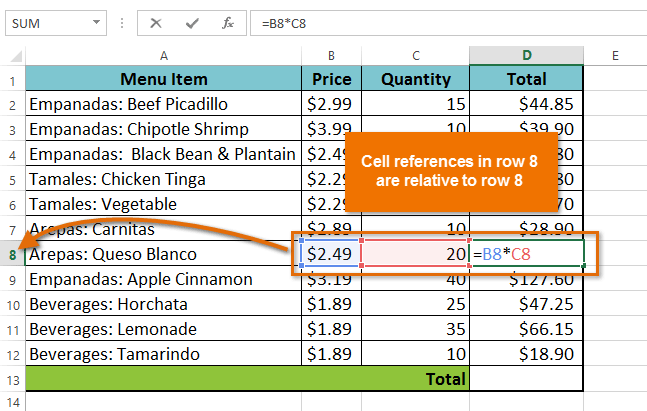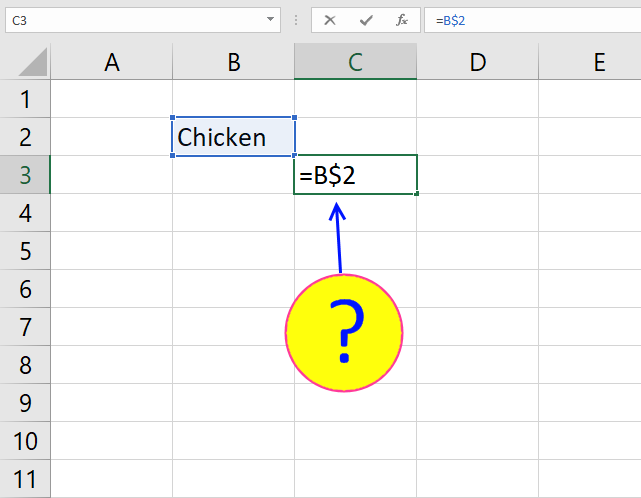

- #HOW TO SUBTRACTING USING RELATIVE CELL REFERENCE EXCEL 2013 HOW TO#
- #HOW TO SUBTRACTING USING RELATIVE CELL REFERENCE EXCEL 2013 CODE#


For example, if you wanted to reference cell A1 on a worksheet named July Budget, its cell reference would be 'July Budget'!A1. Note that if a worksheet name contains a space, you will need to include single quotation marks ( ' ') around the name. For example, if you wanted to reference cell A1 on Sheet1, its cell reference would be Sheet1!A1. To do this, you'll simply need to begin the cell reference with the worksheet name followed by an exclamation point ( !). Most spreadsheet programs allow you to refer to any cell on any worksheet, which can be especially helpful if you want to reference a specific value from one worksheet to another. And please, don’t forget to share this post with your friends, I am sure they will appreciate it.Using cell references with multiple worksheets Make sure to share your views with me in the comment section, I’d love to hear from you. I hope you have found this post helpful and now tell me one thing. In VBA, to use R1C1 is you need to use the FormulaR1C1 method.When you use a row or column number without a square bracket, Excel will treat it as an absolute reference.To refer to a row which is above and column which is behind of the active cell you can use a negative number.To refer a row which is below and column which is ahead of the active cell you can use a positive number.

#HOW TO SUBTRACTING USING RELATIVE CELL REFERENCE EXCEL 2013 CODE#
We can’t use this code for every cell because the cell reference would be fixed ( Otherwise we need to use the Offset property). But, what will happen if we use the A1 reference here instead of R1C1: When you change the location of your table it will work in the same pattern, you don’t have to make any change in your code. You are multiplying the cell which is one column left with a cell which is two columns left from the active cell. Let’s say you want to enter a formula in the active cell where you need to multiply two cells which are at the left side of the active cell. For this, you need to understand the working of the FormulaR1C1 method.
#HOW TO SUBTRACTING USING RELATIVE CELL REFERENCE EXCEL 2013 HOW TO#
So, when you select cell A1 it shows you R1C1, which means row 1 and column 1 and if you go to A2 then it will be R2C1.Īnd, if you know how to use the R1C1 notion, you easily edit the recorded macro codes and save your ton of time. In A1 reference style, you have column name as an alphabet and row name as a number and when you select the A1 cell that means you are in column A and row 1.īut in R1C1 both column and row are in numbers. Difference Between A1 and R1C Reference Style Copy this formula and put it into F2 and copy it down as far as you need: OFFSET (SalesD2,0,ROW ()-ROW (F3)) The symbols are important, in this case they keep the row reference from changing in the formula as it is filled down the sheet. So without any further ado, let’s explore this thing. And today in this post, I’d like to share with you all the aspects of using the R1C1 reference style. For example, if you copy a formula containing absolute cell references and paste it elsewhere, the references will still point to exactly the same cells as they were pointing in formula’s original location. There are fewer additional benefits in R1C1 than A1. Absolute cell reference means that the reference will not change if it is copied and pasted somewhere else. It was first introduced in Multiplan which was developed by Microsoft for Apple Macintosh.īut after few years, Microsoft started to use the A1 style so that people who migrated from Lotus would find it familiar, but R1C1 has been always there in Excel. But some users love to use it and found it more convenient than A1. In Excel, there are two kinds of cell reference styles first is A1 and the second is R1C1.Well, most of the Excel users don’t even know about the existence of R1C1 reference style.


 0 kommentar(er)
0 kommentar(er)
